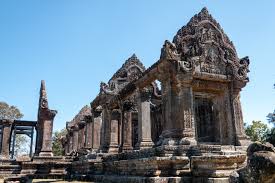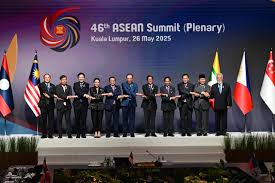Thailand–Cambodia War 2025
Published July 30, 2025
Reason Behind War

The Preah Vihear temple and its surrounding territory has been at the heart of a century-long dispute. While the International Court of Justice awarded ownership of the temple itself to Cambodia in 1962, the surrounding areas remain disputed. In early 2025, construction of new Thai military outposts in contested territory escalated tensions. Cambodia claimed that Thailand violated the existing ceasefire agreements, while Thailand accused Cambodia of backing armed militias operating in the border region.
Underlying this, there are historical grievances. Thai nationalists have long believed the territory was "unjustly taken," whereas Cambodia views it as an existential sovereignty issue. Increased nationalist rhetoric on both sides has made negotiations extremely difficult. The conflict has been further complicated by local resource disputes, including allegations of illegal logging and smuggling in the dense border forests.
Army Comparison

Thailand’s Army: Thailand commands one of Southeast Asia's most advanced militaries, with 360,000 active personnel and modern equipment such as M109A5 howitzers, F-16 fighter jets, and S26T submarines. Their air force and navy provide a clear strategic advantage, allowing them to control key border crossings and supply lines.
Cambodia’s Army: Cambodia’s armed forces are significantly smaller, with around 125,000 personnel. However, recent deliveries of Chinese Type-96 tanks, J-10 fighter jets, and advanced artillery systems have bolstered its capabilities. Cambodia’s strategy focuses on guerrilla-style warfare and leveraging difficult jungle terrain to offset Thailand’s technological edge.
Both sides are engaged in cyber warfare and information campaigns. Thai intelligence agencies have disrupted Cambodian communications, while Cambodia has accused Thailand of spreading disinformation internationally. Skirmishes have already resulted in over 200 casualties on both sides.
Thailand and the US - Old Friends
Thailand is a long-time treaty ally of the United States, and the US has historically provided training and arms through exercises like Cobra Gold. In this conflict, the US has reaffirmed its commitment to Thailand’s security but has urged restraint to avoid destabilizing Southeast Asia. Military advisors and intelligence-sharing have already begun, although Washington insists it will not send combat troops.
Some analysts believe the US is using this crisis to reaffirm its presence in the Indo-Pacific, countering China’s growing influence. Humanitarian aid packages and precision weaponry have been sent discreetly to bolster Thailand's defense without escalating the war publicly.
Cambodia and China: A Growing Partnership
Cambodia has become one of China’s closest allies in the region. Chinese-built infrastructure projects have given Beijing significant leverage, and in return, Cambodia has received advanced weaponry and financial support. Chinese naval vessels have reportedly been seen near Cambodia’s Ream Naval Base, sparking fears that Beijing could open a second front by threatening Thai coastal shipping.
China is also supplying drones and radar systems that have improved Cambodia’s surveillance and counter-strike capabilities. However, critics warn that Cambodia’s increasing dependence on Beijing risks making it a proxy in the wider US-China strategic rivalry.
What’s Next?

The Association of Southeast Asian Nations (ASEAN) is under pressure to broker peace, but unity within the bloc remains elusive. Laos and Vietnam are hesitant to side with either nation, while Malaysia and Singapore are urging immediate talks. Several backchannel negotiations are underway, though neither Thailand nor Cambodia has shown signs of backing down.
International observers fear that if the conflict continues, it could spill over into neighboring countries and disrupt global trade routes through the Malacca Strait. A UN resolution calling for a ceasefire is expected to be tabled soon, but without strong backing from Washington and Beijing, its effectiveness remains uncertain.
Stay tuned for more stories from Southeast Asia on our Articles page.